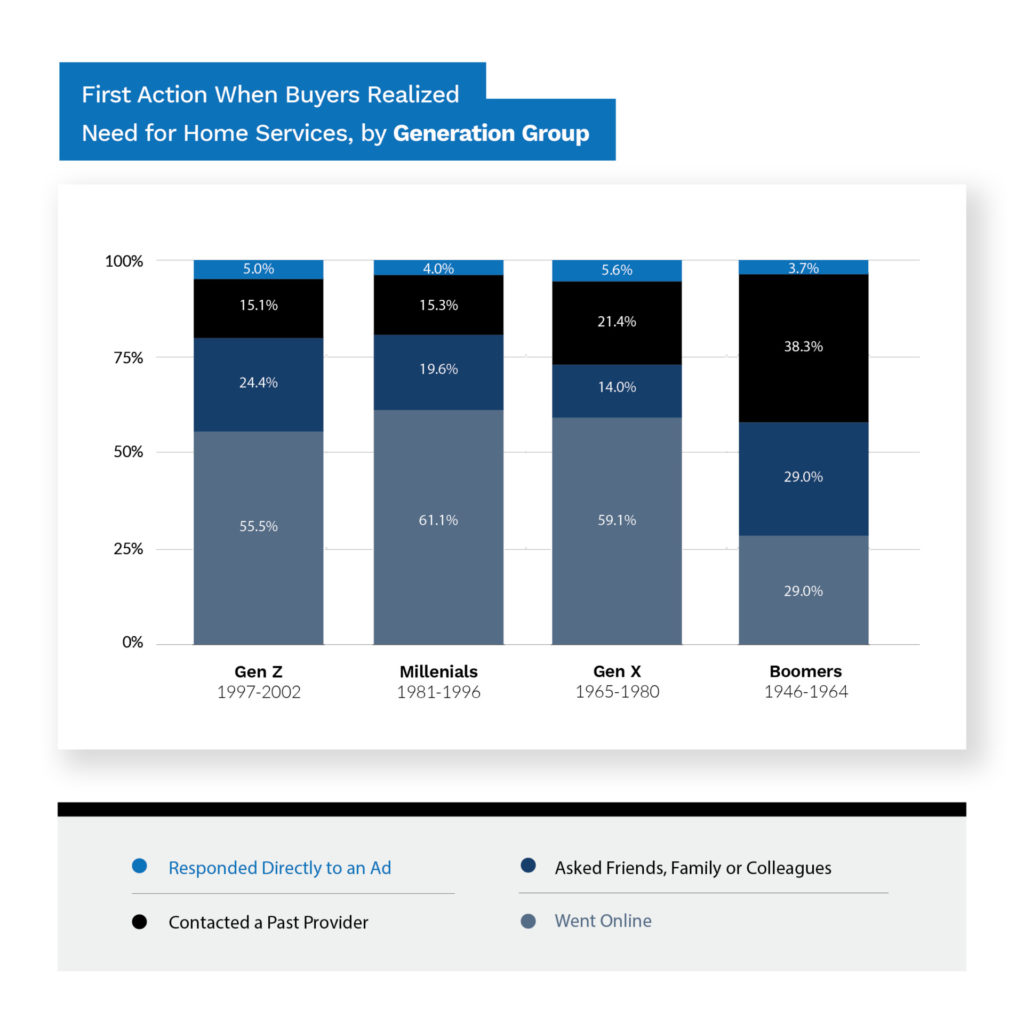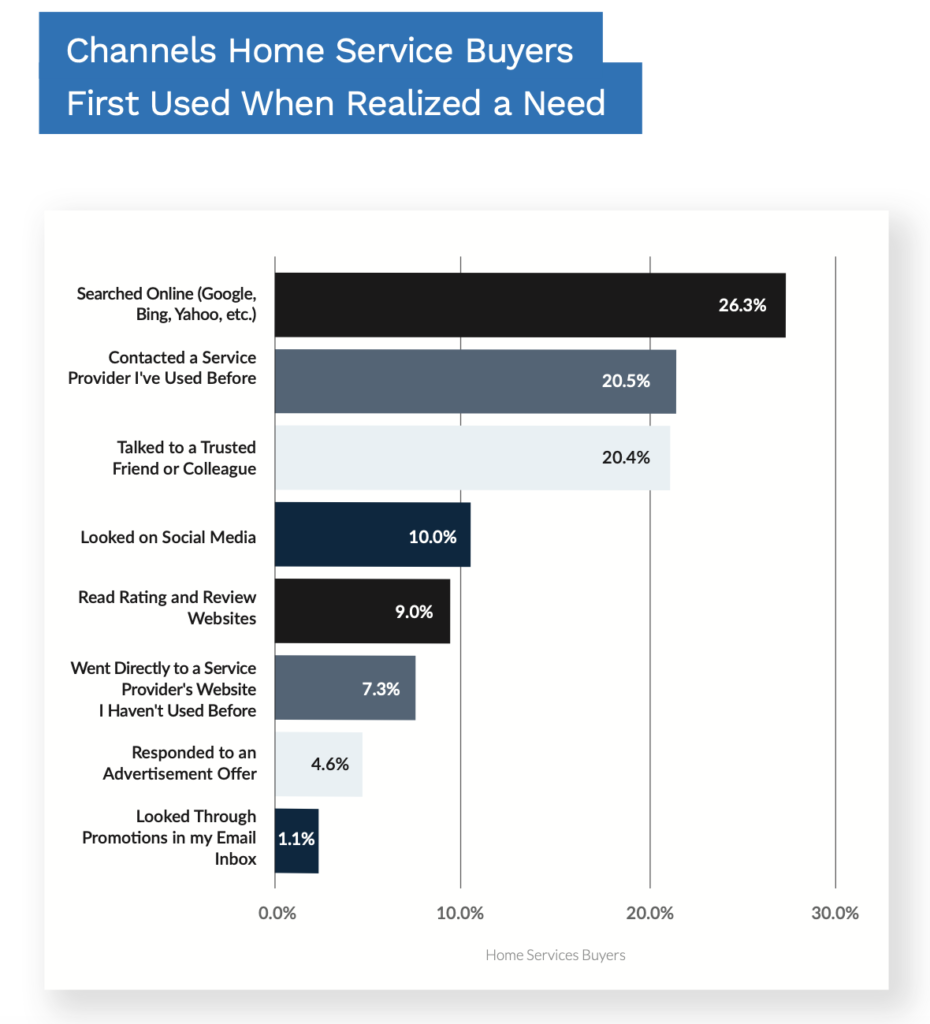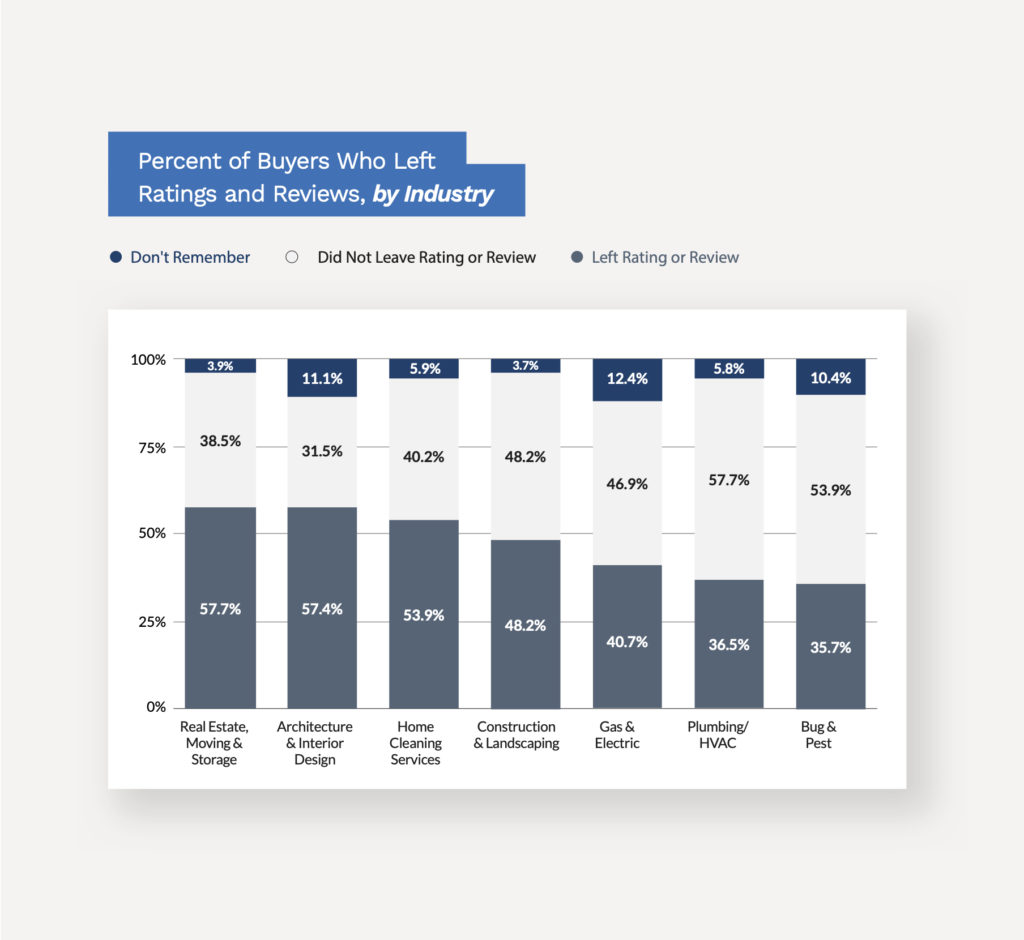
Whether your customers are working parents, busy professionals, or homeowners looking for a deep spring clean, they want to hire a trustworthy cleaning business. It’s hard to find new clients in such a crowded space. Learn how to advertise your cleaning business by using the buyer’s journey as a map.
In August, 2020, Silverback Strategies surveyed 724 U.S. adults who purchased a home service within the most recent 12 months. The goal was to learn how homeowners purchased services like home cleaning, plumbing, and HVAC. The full report breaks down results by industry.
This article selects insights that can help cleaning businesses develop creative strategies, select the right channels, and narrow down key points of differentiation.
How to Advertise Your Cleaning Business
First, let’s take a look at the customer journey in home services. Through our research, we’ve categorized the customer journey in to five stages:
- Realization
- Education
- Evaluation
- Decision
- Advocacy
Let’s take a look at each as they relate to advertising a cleaning business.
Stage 1: Buyers realize they need help
Customers might call your cleaning business because they can’t manage cleaning a property themselves. Or, because outsourcing their regular cleaning duties lets them spend more time doing things they love.
The survey results showed when buyers realize they need help, 60% went online. In fact, buyers of home cleaning services are more likely to go online than contact a past provider or ask a friend. This behavior varies slightly depending on the generation, though. Boomers, for example, contact past providers nearly 40% of the time and are equally likely to ask a friend as go online (29%). See the chart below.

Stage 2: Learning about home cleaning solutions
After they begin their search, buyers want to know what services and local providers exist. To find the information they need, 26% of home service shoppers use search engines. This is why local SEO is critical to advertising a cleaning business.

During this research phase, homeowners are looking both for providers in their area and answers to general questions about home cleaning services. To appeal to buyers at this point, include relevant content on your search-optimized website and social media pages addressing their search. This helps you stand out as knowledgeable and customer-oriented. Providing answers to common questions around cost, cleaning packages and frequency of service will keep buyers on your website longer.
As for social media marketing, more than 65% of home cleaning shoppers say they are active on Facebook, YouTube and Instagram, using those social platforms multiple times per week. Focusing on these channels will help you reach and educate your target audience.
Stage 3: Evaluating service providers
After determining what services they want and making a list of providers, shoppers then start evaluating. In this phase, home cleaning shoppers list their primary decision-making factors as cost (62%), customer ratings (49%) and examples of past performance (41%). Knowing how to get clients for your cleaning business starts with investing in a website addressing these concerns.
To encourage buyers to give you a call, include pricing on your website when possible and highlight customer testimonials and reviews. You can also provide examples of past work, such as before and after photos of large projects. In the evaluation phase, customers want to know you are reliable, cost-effective and provide high quality work, so make sure your website and social profiles emphasize those pain points.
Stage 4: Deciding who will help
Unlike many other home services requiring just a short-term engagement, many home cleaners work with clients weekly or monthly for an extended period of time. Because of this, customers shop around, investing a lot of time into deciding whom to hire.
In the home cleaning industry, 32% of homeowners call three or more providers before deciding, and an additional 29% call at least two providers. From a business-owner perspective, you and your employees need to be ready to talk about what differentiates you from the competition. Consider training staff on what to say to prospective customers and keep phone lines open in the evening.
Stage 5: Advocating for the service provider
Even after your customer signs on the dotted line, their buying journey is not over. One of the biggest and most important challenges in business is turning your customers into future advocates, especially in a world where 20% of homeowners still ask friends and family for referrals. Home cleaning businesses have an advantage in this regard, because customers are accustomed to leaving ratings and reviews for this type of service – in fact, 54% of homeowners say they reviewed or rated their home cleaner. See the chart below.

Of course, providing a top-notch cleaning is the foundation of any good referral, but to boost ratings even higher, consider incentivizing your current customers to review your business by offering discounts in exchange. You can also encourage customers to rate your business by texting or emailing links to top review channels like Google and Facebook.
Putting it all together
Learning how to market a cleaning business is all about understanding where your customers are – and how to reach them. When you track consumer behavior, it’s easier to link your marketing strategies to the areas making the most impact. For home cleaning businesses, showcasing ratings and reviews and ensuring your company is easy to find online will keep your business growing.
Are you a business owner who wants to know more about how to advertise your cleaning business? Silverback Strategies can help. Contact us to learn more.
Recent Posts
How to Optimize a Google Business Profile
Read the ArticleUnderstanding Pest Marketing: How Homeowners Shop for Bug and Pest Services
Read the ArticleHVAC and Plumbing Marketing: The Five Stages of the Buyer’s Journey
Read the Article
Unlock Your Growth Potential
Silverback helps businesses catapult web traffic, leads, and sales. We combine analytical and creative expertise to drive inbound marketing campaigns and track it all to find insights on what worked, what didn’t, and what we should try out next.
Contact Us